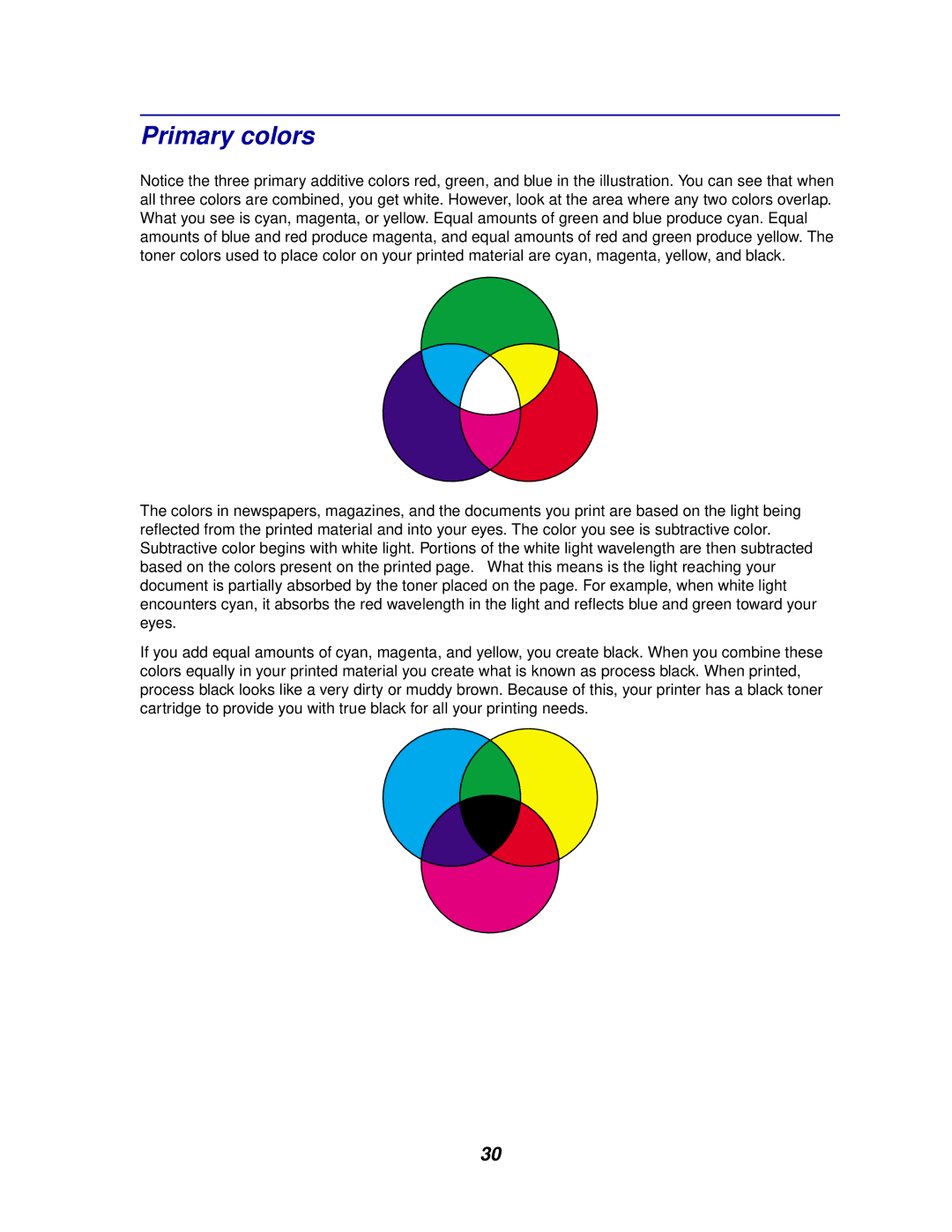
Primary colors
Notice the three primary additive colors red, green, and blue in the illustration. You can see that when all three colors are combined, you get white. However, look at the area where any two colors overlap. What you see is cyan, magenta, or yellow. Equal amounts of green and blue produce cyan. Equal amounts of blue and red produce magenta, and equal amounts of red and green produce yellow. The toner colors used to place color on your printed material are cyan, magenta, yellow, and black.
The colors in newspapers, magazines, and the documents you print are based on the light being reflected from the printed material and into your eyes. The color you see is subtractive color. Subtractive color begins with white light. Portions of the white light wavelength are then subtracted based on the colors present on the printed page. What this means is the light reaching your document is partially absorbed by the toner placed on the page. For example, when white light encounters cyan, it absorbs the red wavelength in the light and reflects blue and green toward your eyes.
If you add equal amounts of cyan, magenta, and yellow, you create black. When you combine these colors equally in your printed material you create what is known as process black. When printed, process black looks like a very dirty or muddy brown. Because of this, your printer has a black toner cartridge to provide you with true black for all your printing needs.
30
